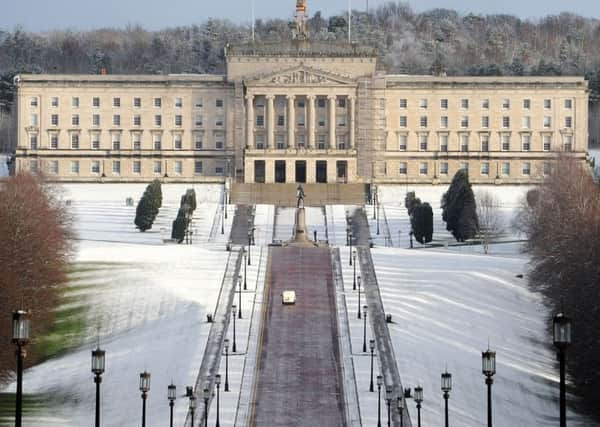Stormont's £2.1bn debt to cost £60m interest a year


The interest payments alone on what will be a £2.1 billion debt will be almost £60 million a year in the 2016-2017 financial year and a further £90 million a year to repay past borrowings.
Those repayments now dwarf the entire budget of the Assembly, which costs £39.4 million a year to run.
Advertisement
Hide AdAdvertisement
Hide AdThe interest repayments are based on current all-time low interest rates, but rates are expected to rise in coming years, something which will effectively take more money out of the Stormont budget.
Since 2003, the Executive has borrowed almost £3 billion, but debt repayments mean that about £2.1 billion will be outstanding by the end of next year.
The Stormont House Agreement allows the Executive to use £700 million of borrowing – which was meant to be for major capital projects such as new road schemes – to pay off around 20,000 civil servants.
The budget states: “It is considered that this remains an effective way to deliver a voluntary exit scheme. Each £100 million of borrowing will cost between £3 million and £4 million a year in loan repayments, but will yield annual savings in excess of £50 million. These are savings that can be used to deliver other priorities.”
Advertisement
Hide AdAdvertisement
Hide AdEarlier this week it was revealed that the average payout under the voluntary redundancy scheme was £38,800.
The budget acknowledges the problems with increased borrowing: “The Executive considers it important to give due regard to the level of indebtedness in respect of RRI borrowing. Although predicted levels of outstanding debt at the end of 2016-17 are below the £3 billion permitted by legislation, incurring large levels of debt that future generations will be responsible for servicing must be carefully managed.”
Northern Ireland’s debt equates to £1,138 for every man, woman and child in the Province. The UK’s national debt equates to £26,000 per person.
The budget, which takes effect from April, coincides with a cut in the number of departments.
Advertisement
Hide AdAdvertisement
Hide AdIn departmental budgets, the biggest cut will be 5.7 per cent in the new Department of Agriculture, Environment and Rural Affairs.
The budget states that the department faces “unprecedented financial pressures”, with the budget allocated to it posing a “significant challenge”. That, it says, will lead to a “fundamental change to the services it delivers and how it delivers them”.
There will be a five per cent cut in the budget for the new Executive Office, to replace the Office of the First Minister and Deputy First Minister.
The Health Department will see a 2.7 per cent increase, but the increase in demand for health services from an ageing population is expected to be greater than that figure.
NI’s education system on course to be ‘second rate’
Advertisement
Hide AdAdvertisement
Hide AdThe Executive’s budget document acknowledges that a consequence of its decision to freeze university tuition fees while reducing grant funding from taxpayers is that “a clear funding gap has emerged and widened between our own universities and those in other parts of these islands”.
It warns: “If we cannot maintain competitive funding levels, the quality of provision in Northern Ireland will diminish in relation to other parts of the UK and we will end up with a second-rate higher education system.”